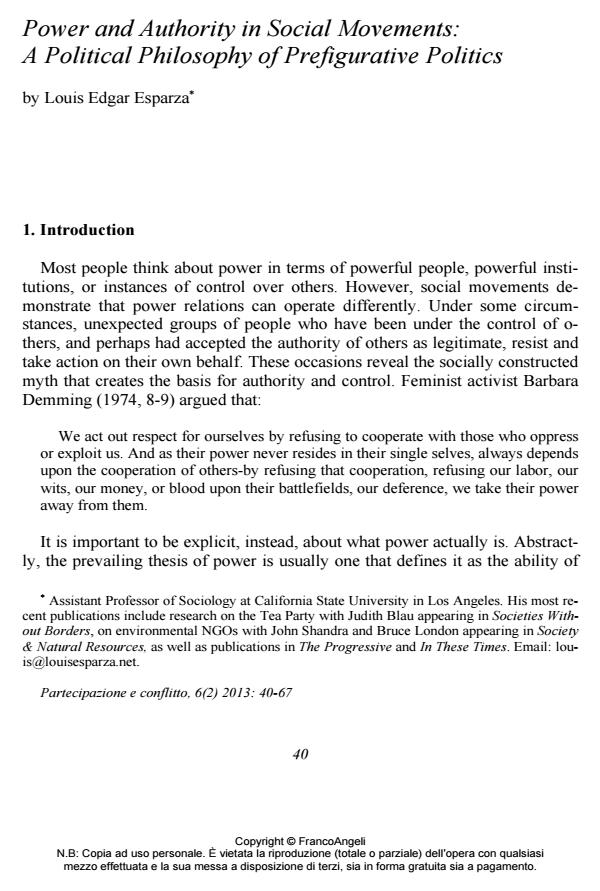Power and Authority in Social Movements: A Political Philosophy of Prefigurative Politics
Journal title PARTECIPAZIONE E CONFLITTO
Author/s Luois Edgar Esparza
Publishing Year 2013 Issue 2013/2
Language English Pages 27 P. 40-66 File size 330 KB
DOI 10.3280/PACO2013-002003
DOI is like a bar code for intellectual property: to have more infomation
click here
Below, you can see the article first page
If you want to buy this article in PDF format, you can do it, following the instructions to buy download credits

FrancoAngeli is member of Publishers International Linking Association, Inc (PILA), a not-for-profit association which run the CrossRef service enabling links to and from online scholarly content.
Sometimes, and unexpectedly, people having accepted the authority of others as legitimate stop doing it and start resist, in the sense they take action on their own behalf. By this way they initiate exhibiting power, denying civil disobedience as mere resistance and lack of political strenght.
Keywords: Power, Structure of Authority, Resistance, High-Risk Activism, Prefigurative Politics
Luois Edgar Esparza, Power and Authority in Social Movements: A Political Philosophy of Prefigurative Politics in "PARTECIPAZIONE E CONFLITTO" 2/2013, pp 40-66, DOI: 10.3280/PACO2013-002003